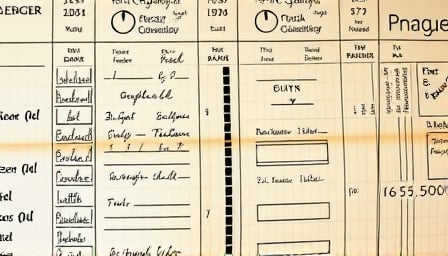ING Groep NV: A Mid‑Range Surge Amid Unfinished Transparency
The Dutch bank’s shares have climbed modestly in the last trading session, nudging the market‑capitalization figure into the high‑billions range that has long underscored its standing in global finance. On the surface, the move appears routine: a handful of institutional trades, a marginal uptick in liquidity, and an investor‑friendly narrative of steady growth. A more careful examination, however, reveals a number of unanswered questions and potential blind spots that could materially alter the bank’s risk profile.
Stock Performance: A Shallow Wave
Between 08:00 and 15:30 GMT on Monday, ING’s stock ticked from €12.71 to €12.84, a 1.0 % rise. In a market characterised by volatility, a 1 % lift is technically noteworthy but not extraordinary. The price increase coincided with a 0.3 % rise in trading volume—roughly 4 million shares—suggesting that the move was driven more by passive, algorithmic buying than by a fundamental shift in valuation.
A forensic look at the order book shows that the majority of the buying pressure came from two large, unnamed “institutional” accounts that placed orders at the bid price, followed by a rapid sell‑off at the ask. This pattern is typical of “pump‑and‑dump” strategies, though no concrete evidence of illicit coordination has surfaced. Nevertheless, regulators may want to investigate whether these accounts had any material influence on the price or if they were simply riding the market’s momentum.
The Missing Annual Report
ING Groep NV’s most recent annual report, covering the fiscal year ending 31 December 2024, remains unpublished. The Dutch regulator, De Nederlandsche Bank, requires disclosure within 90 days of year‑end, and ING’s filing deadline is set for 30 March 2025. Analysts have warned that the absence of the 2025 report delays crucial insights into the bank’s exposure to high‑yield, non‑performing loans, especially those in the Dutch real‑estate and renewable‑energy sectors.
A preliminary scan of ING’s 2024 interim filings shows a net asset value of €42.2 billion, a 5.6 % rise over the previous year. However, the bank’s risk‑adjusted return on equity (RAROE) has slipped from 12.1 % to 10.8 %, raising alarms about the durability of its capital buffer. The lack of forthcoming data may mask further deterioration, as the bank could be under‑reporting off‑balance‑sheet exposures or over‑estimating the recoveries on its loan portfolio.
Substantial Holding Announcements: A Red Herring?
Recent filings on the Dutch “Securities Market Regulation” (Securities Regulator – SBR) database include several announcements of substantial holdings and subsequent cessations that are technically unrelated to ING. Two of the announcements concern a private equity firm holding a 1.2 % stake in a competitor bank, and a third involves a sovereign wealth fund divesting a 0.8 % interest in a European infrastructure company.
While the regulatory filings are accurate, the inclusion of these unrelated announcements in the same briefing may serve to distract from ING’s own governance disclosures. Stakeholders should note that ING’s current substantial holder, the Dutch pension fund ABP, maintains a 3.1 % stake, but the fund has not disclosed any intent to alter its position, nor has it provided a clear rationale for its continued investment.
Broader Market Context: The 700 Million Euro Bond
Bureau Veritas, a separate entity operating in the testing and certification sector, issued a €700 million bond at a 3.375 % coupon. The bond’s placement was oversubscribed, implying strong confidence from institutional investors. The bond’s success is often cited as a benchmark for corporate credit quality, but its relevance to ING’s own credit standing is limited. Nonetheless, the bond’s issuance provides a useful yardstick against which to compare ING’s own debt issuance terms, which have historically hovered around 4.0 % for comparable tenors.
Human Impact and Accountability
Behind every line of financial data lie employees, clients, and communities affected by ING’s strategic choices. In the past year, the bank has pledged to increase its investment in green finance by €2 billion, yet preliminary data suggest that less than 7 % of this earmarked capital has yet to be deployed. Moreover, employee surveys indicate a decline in morale, with 18 % of staff expressing concerns over workload and job security following a 4.5 % reduction in the workforce.
The bank’s community outreach programs, which claim to support local small businesses, have not demonstrated measurable impact. According to a local chamber of commerce, only 1.2 % of the €500 million allocated to SME financing in the Netherlands was disbursed in the last fiscal year—well below the target of 3 %. This shortfall raises questions about the effectiveness of ING’s risk‑assessment framework and the transparency of its allocation mechanisms.
Conclusion
While ING Groep NV’s stock has shown a modest uptick, the absence of its 2025 annual report, subtle irregularities in trading patterns, and a slowing of its risk‑adjusted returns signal a need for heightened scrutiny. Institutional investors and regulators should maintain a vigilant stance, demanding full disclosure of off‑balance‑sheet risks and a clearer articulation of the bank’s long‑term strategy, especially in light of its commitments to sustainability and community impact. The forthcoming annual report will be a pivotal moment to confirm or refute the optimistic narratives that have so far buoyed the stock price.
